The Aomway Commander V2s are the 2018 followup to the successful Aomway Commander V1 FPV headset. Unlike their predecessor, which targeted the FatShark Dominator V3s, the Commander V2s have set their sights higher toward the FatShark HD3s. Instead of 16:9 displays with a 32 degree field of view (FOV) the V2s now sport 4:3 displays with an impressive 45 degree FOV. And unlike the HD3s, these switch to 16:9. These are priced a bit higher than the original Commander V1s, but they're a substantially different goggle.
Features
- DVR
- HDMI input
- Internal fan
- 45 degree FOV
- Diversity receivers
- Includes two antennas
- 4:3/16:9 switchable displays

Build Quality
I love the fit and finish of these. The exterior plastic has a smooth, glossy finish unlike any goggle on the market. They definitely have a premium feel to them. The buttons offer an easy, satisfying click and the IPD sliders are smooth and buttery. They're about 30g lighter than a comparable FatShark and the weight savings feels really good on the face. Without any antennas they weigh 198g while the HDOs weigh 228g with a module.
The headstrap quality is pretty good, but nothing spectacular. After a few months of use it hasn't started to unravel, nor does it form lint balls like some others. There's a battery strap on the back with loops along the side to hold the battery lead. There's also a 3rd strap to go over your head, which I like, but it cannot be removed like on the EV200D. And finally, the face foam isn't too great. It's already started to come apart around the nose area, but at least they included a spare.
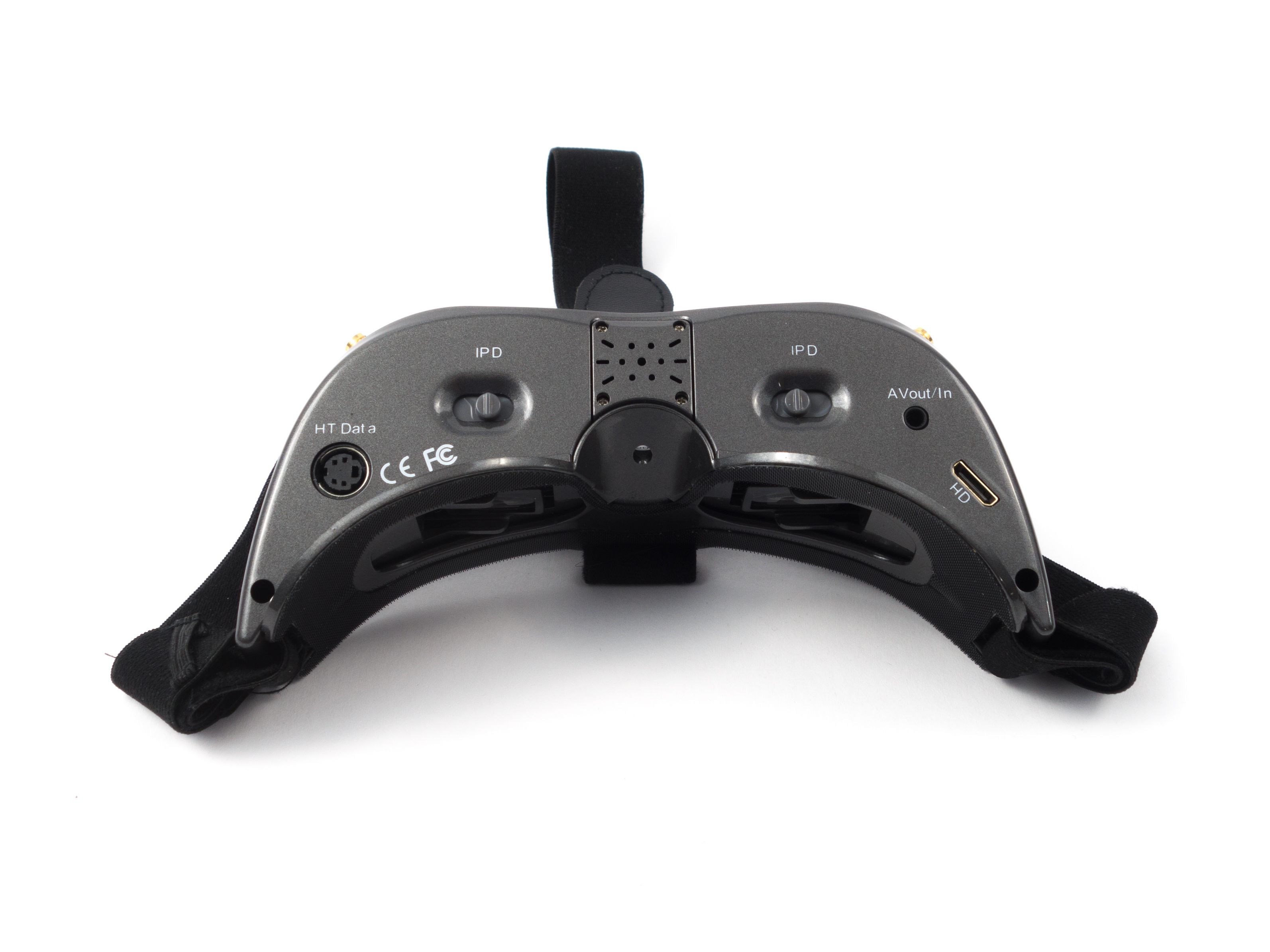
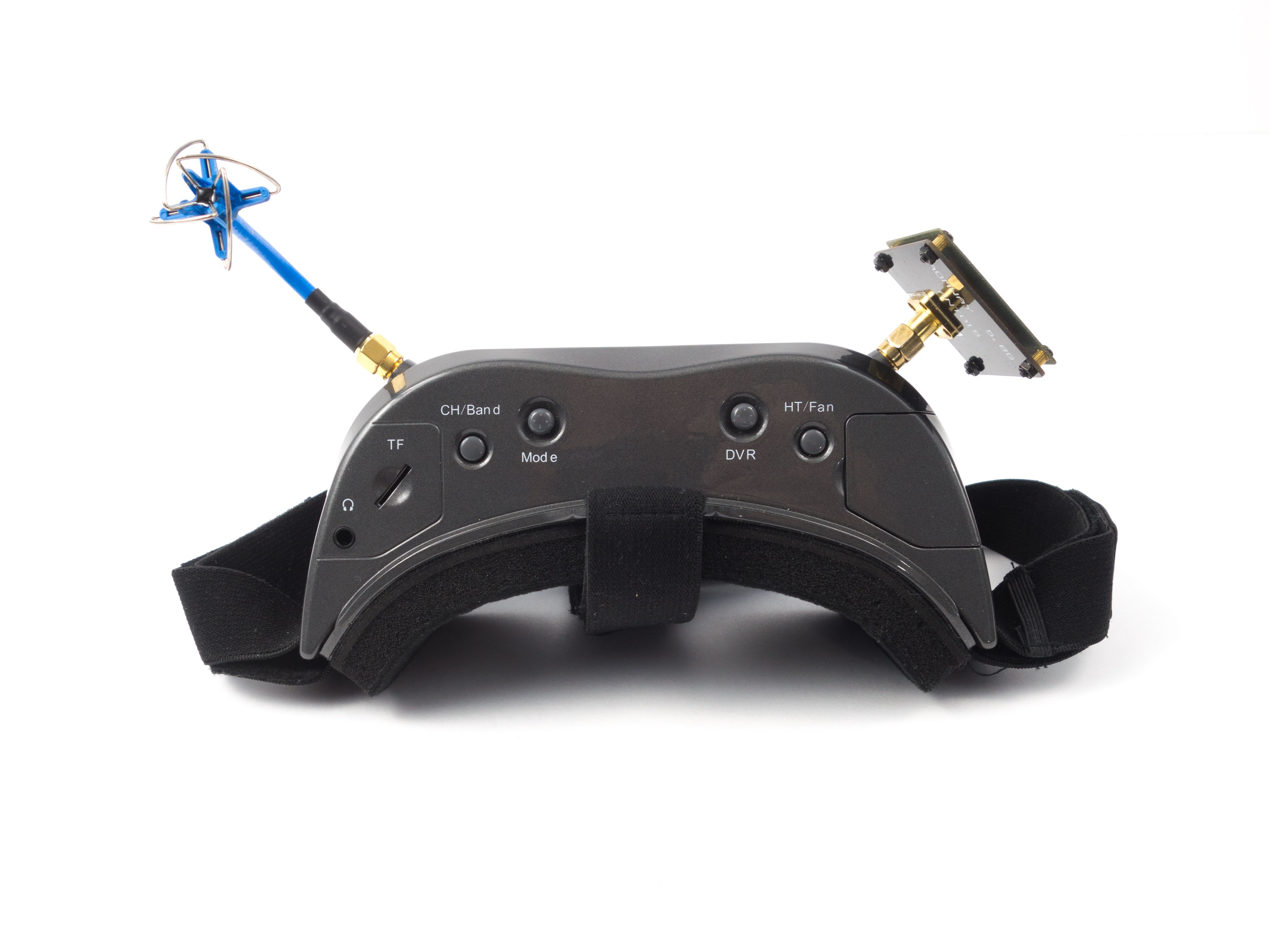
Image Quality
These use the same 800x600 displays found in both the FatShark HD3s and HD2s, so there's nothing new there. The image quality is quite good and the FOV is perfect. These hit a sweet spot between the 42 degree HD3s and the 50 degree HD2s. The colors are accurate and pixelation is minimal. The resolution isn't as sharp as that of the HDOs or the Eachine EV200Ds, but until recently this was the highest resolution available on the market.
IPDs
I really like the IPDs. They're very smooth and easy to adjust. The range is 59-72mm which is slightly wider than most FatSharks. Those typically max out at 69mm, so if you've got a wide IPD these may accommodate you. No matter where I set the IPDs I still experience a little bit of blur around the sides, but this is no different than the HD3s which seem to have nearly identical blurring. They support FatShark diopters which slide into place fairly well. I use -2 which really helps reduce the blur around the edges.
Comfort and Fit
These are the most comfortable goggles I've ever used. They just float on my face. The foam is the perfect thickness and the light weight makes a huge difference. With FatSharks I'm always adjusting the headstrap. When I lift them up the strap is too high and when I put them down it's too low. I can never find a sweet spot. That's not the case here. With the 3rd strap and the battery holder in the back I never need to adjust them. I just lift them up and pull them down. I can leave them on my head while I fumble about with my batteries and forget they're even there.
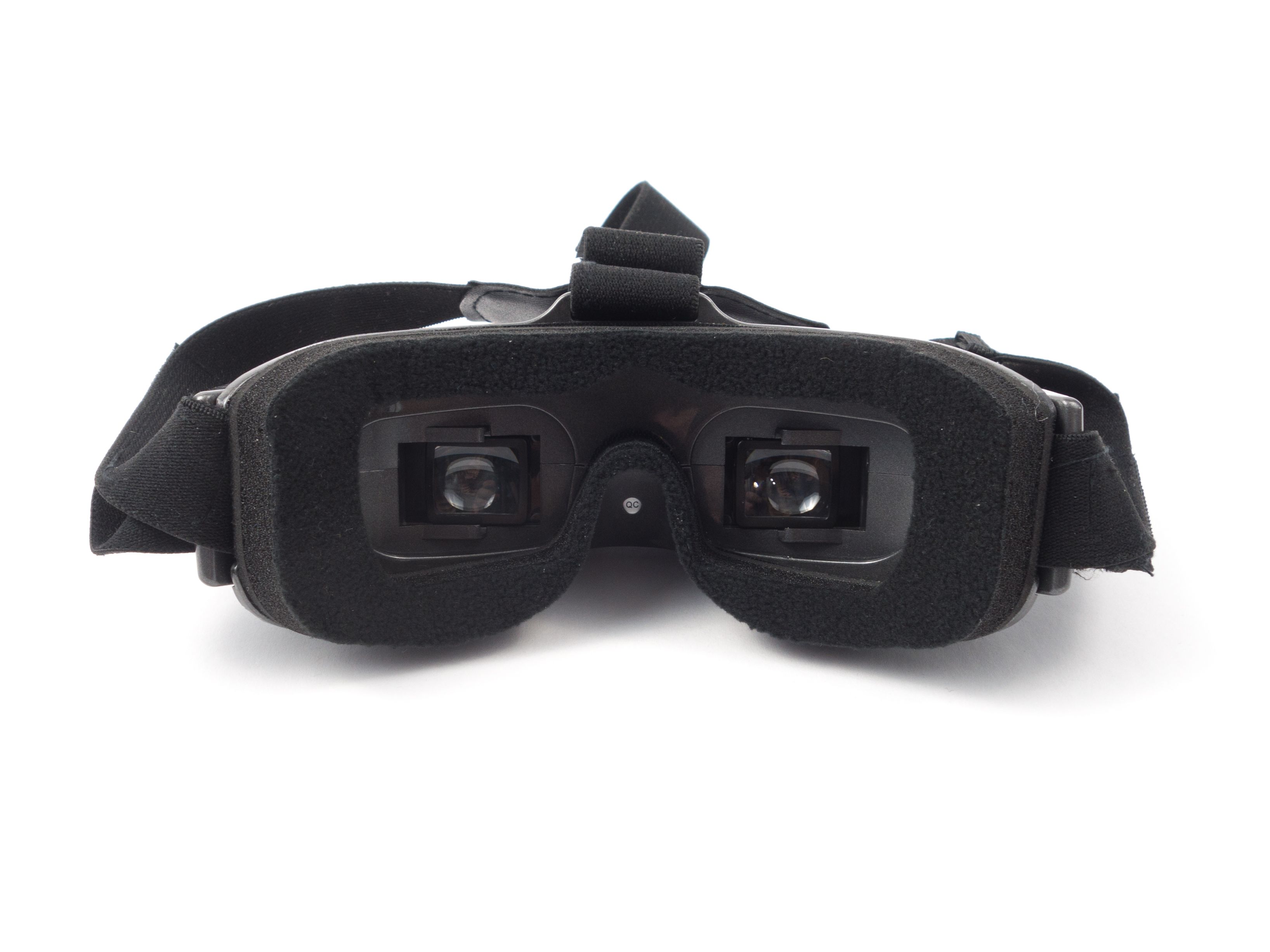
Gripes
I don't have too many gripes about these. They really are great goggles. When they hit the market they were priced at $440 which was the major gripe across the community. That's just too much spend when you can buy FatShark HD3s for $400. Now that the price has come down these truly are a great value.
Other than that I've only got minor complaints. To change the aspect ratio or channel you need to do a long press to bring the menu up. Single pressing the menu button does nothing, so why the long press? That and to exit the menu you need to scroll all the way to the bottom to exit. There's no physical exit button and you can't scroll up to reach the bottom.
HDMI
Now I couldn't get HDMI to work on my Macbook Pro, but it works on my PC, so your mileage may vary. These only offer 4:3 HDMI, so you'll get a squished image. The HD3s switch to 16:9 for HDMI. Strangely enough you cannot switch to 16:9 analog on the HD3s while you can on the Commander V2s. The HDMI image quality is decent, but text on a high resolution can be almost impossible to read. These have nothing on the stellar HDMI performance of the Eachine EV200Ds.
DVR
The DVR works just fine. It's got the same interface as the FatShark DVR and lets you auto-record and review footage. Unlike on most FatSharks, you don't need to turn off the receiver to review DVR footage, so that saves a step. I enjoy the auto-record feature and simply tell it to stop and start recording between packs. It's very simple and easy to use. Another bonus is the microSD is easy to insert and eject with just your fingers. I need to use tweezers to pull it out of my FatSharks.
Reception
The diversity receivers work well. I have no reception issues and find them to be exactly on par with any other diversity receiver on the market. They lack any special features like favorite channels or a lost model finder, but you can easily select your band or use the auto scan. A nice bonus is the included circular polarized and patch antennas. Not one comparable headset on the market includes these, so that's a $20-$30 savings right there. The antennas work fine, but the patch doesn't include a flexi bit to adjust the angle.
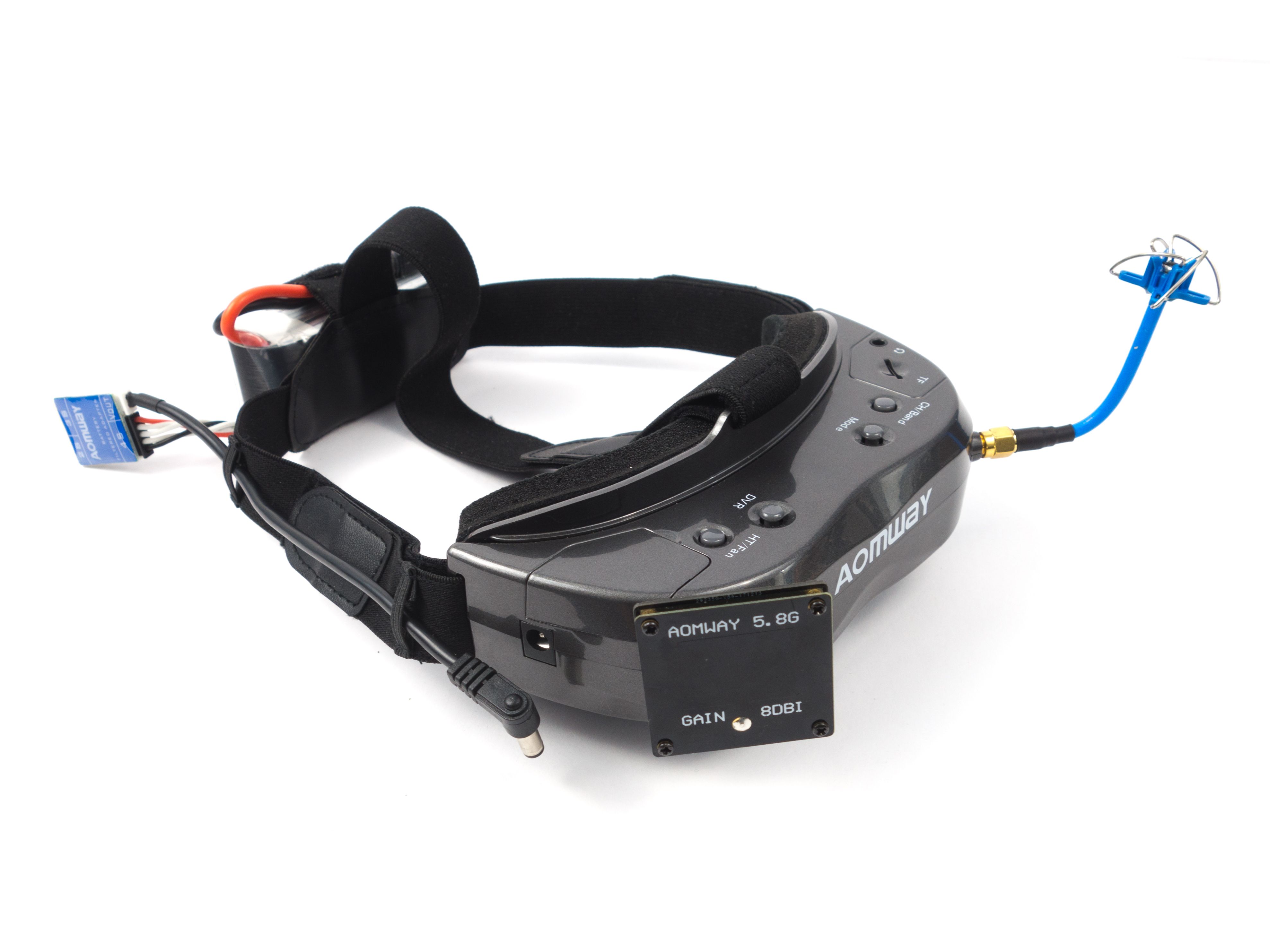
Goggle Comparisons
Now for the comparison. While I haven't tested the Skyzone Sky03 I have tried a number of other comparable goggles. Here are just a handful of other options on the market.
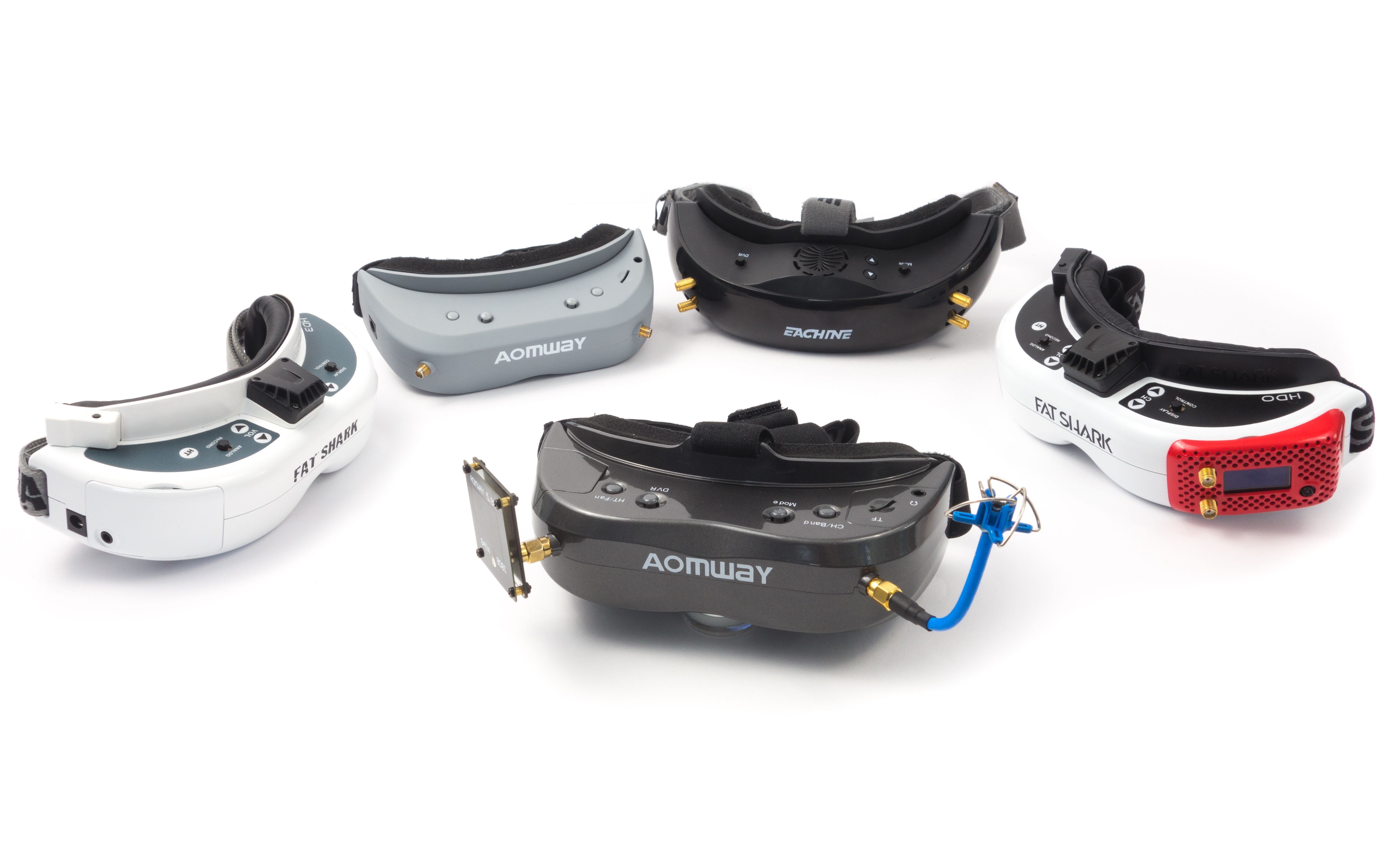
Commander V2 vs FatShark HD3
It's pretty obvious Aomway was going after the FatShark HD3s. The HD3s were the reigning champion of FPV goggles since their introduction in 2016. There was nothing better and nothing more expensive. They sold for $500, but have since been reduced to a $400 "core" package. Since both of these goggles offer a very similar experience, let's consider the value. FatShark's customer support is second to none and you can expect any defects or issues to be solved in a prompt manner. Aomway doesn't offer that level of support and relies solely on their distributors to handle customer service. That being said Aomway has put together a compelling package. They include antennas and internal diversity receivers. Expect to spend as much as $50-$100 to add these to the HD3s. Neither goggle includes a battery, but the HD3s do come with an 18650 battery case. The Aomways come with a battery cable which accepts any 2S-4S pack. Now if you want to buy a fancy receiver module like the rapidFire or the Clearview, you're best off going with the HD3s, but if traditional diversity is enough then the Aomways are great.
Commander V2 vs Eachine EV200D
The Eachine EV200Ds are newer to the market and sell for a great deal less, but they're certainly a contender. They use a different display technology called LCoS which relies on mirrors and projection displays. The resolution is far greater at 1280x720 (16:9), compared to the 800x600 (4:3) resolution of the Aomways. The image is noticeably sharper. The EV200Ds have a respectable 42 degree FOV at 16:9. They switch to 4:3, but at a much reduced FOV of about 36 degrees. Running the Aomways at 16:9 offers nearly the same FOV as the EV200Ds at 16:9. In terms of value, the EV200Ds include two diversity modules for an opportunity to run 4 antennas or quadversity. They don't include any antennas, but there is a USB-chargeable battery. Quadversity is interesting because you can run multiple patch antennas and point them toward problem areas to greatly improve your signal. Or you can replace them with a high-end module like the rapidFire. For the price the EV200Ds are a very compelling option, but the Aomways offer a more immersive experience with the larger FOV at 4:3.
Commander V2 vs FatShark HDO
The FatShark HDOs are the new champion of FPV. They feature 960x720 (4:3) OLED displays at a smaller 37 degree FOV. The displays are rich, contrasty and sharp with very little backlight glow. The higher resolution really shines when paired with a quality CMOS camera like the Runcam Eagle 2 or the Caddx SDR2. The major caveat is the price. Currently, the HDOs sell for $500 without a module, so expect to spend upwards of $600 for the complete package. They're really in another league in terms of technology and price. That being said, I find myself reaching for the Aomways more often than the HDOs. The Aomways are far more immersive with their 45 degree FOV and they just feel more comfortable. While the HDOs are great, the price is really hard to justify. The picture is only as good as your camera and if you're flying budget cams like the Caddx F1 or the Foxeer Arrow Micro then you won't fully experience the OLED displays.
Commander V2 vs Commander V1
The Aomway Commander V1 uses the same 854x480 (16:9) displays of the Fatshark Dominator V3s, the Skyzone Sky02s and the Flysight Falcon FG01s. All of these goggles are very similar and generally sell for around $300 with varying features. I only mention these because I want to point out the stark difference in FOV. None of these goggles offer more than a 32 degree FOV. That means the experience is more akin to watching a TV from across the room. They lack immersion and make it a little more difficult to see objects when flying. They all feature 16:9 native aspect ratios, but the Commander V1s let you switch to 4:3 at a tiny 26 degrees. That's nearly 20 degrees less than the Commander V2s. Don't get me wrong, they're all great goggles in their own way, but the Commander V2s are much more immersive.
Final Thoughts
I love these goggles. I've got just about every goggle out there and I just keep reaching for these. They're light, comfortable and immersive. I love the way they feel and the experience is great. They aren't perfect by any means. I can never get the edge blur to go away and the menu system could be better, but these are common problems. When they were released they sold for $440 which is far too expensive. Recently I've seen them priced around $390 which makes them a great value. Throw in a coupon and you've got a great goggle at a great price. I strongly recommend these and will continue to use them.
Disclaimer: This headset was provided courtesy of Banggood.com in exchange for a fair and unbiased review. This article utilizes affiliate links and purchasing any product mentioned here will help support RotorBuilds.com
Photos
Where to Buy
Goggles |
FatShark Dominator HDO 4:3 OLED Display FPV Video Goggles 960x720 for RC Drone
(136 builds)
Banggood.com
|
$499.99 |
Goggles |
Fatshark Dominator HD3 Core 3D FPV Goggles with HDMI DVR Support Head Tracker
(87 builds)
Banggood.com
|
$399.00 |
Goggles |
AOMWAY Commander V2 FPV Goggles 1080P 5.8G 64CH Headset HDin AVin Support Head Tracker
(2 builds)
Banggood.com
|
$389.00 |
Goggles |
Eachine EV200D 1280*720 5.8G 72CH True Diversity FPV Goggles HD Port in 2D/3D Built-in DVR
(26 builds)
Banggood.com
|
$269.90 |
Goggles |
Aomway Commander Goggles V1 FPV 2D 3D 40CH 5.8G Support HD Port DVR Headtracker For RC Drone
(36 builds)
Banggood.com
|
$255.90 |
Accessories |
Aomway Commander Diopter Lens Set -2.00/-4.00 Nearsighted Shortsighted Lenses for Fatshark Skyzone FPV Goggles
(2 builds)
Banggood.com
|
$5.99 |
Just snagged a pair for $340!! Great review, I've been waffling between these and the EV200s for awhile, but I'm excited to finally pull the trigger and I think these are going to do me the best, especially for native 4:3 aspect ratio.

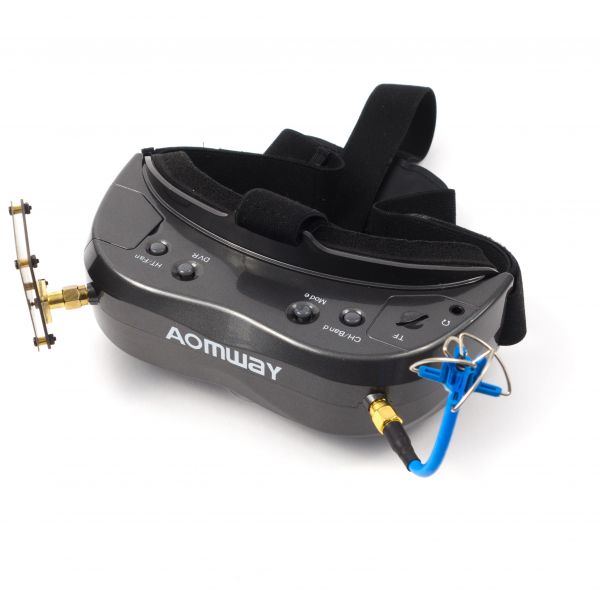





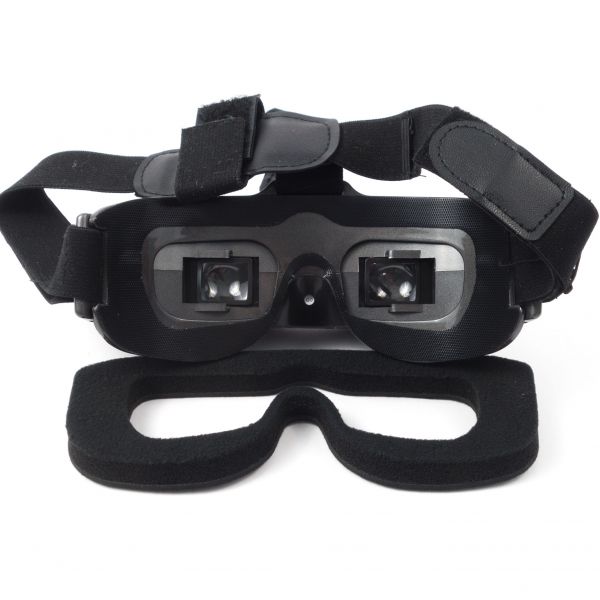
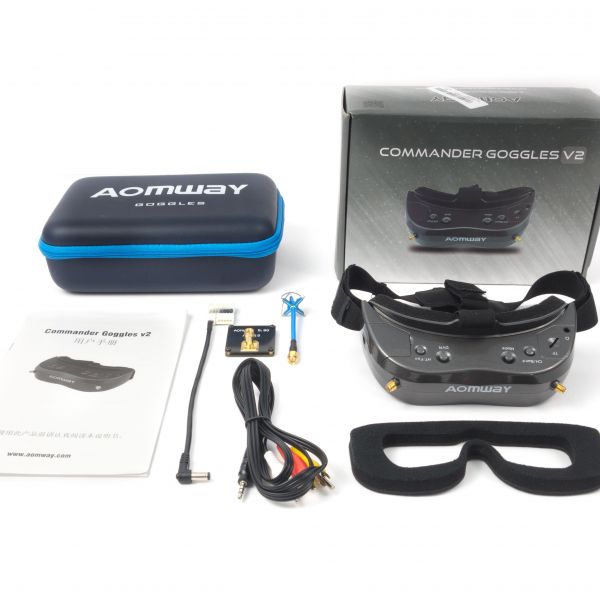

Cool glasses, I had similar ones, I liked them very much. Now I want something new, what do you recommend?
If you have the money go DJI fpv goggles caddx vista transmitter / vtx, and controller , easiest way back in
DJI fpv -best option